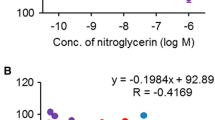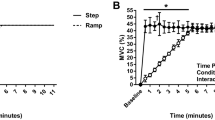Abstract.
The effects of a maintained increase in mean arterial wall shear stress (SSm) caused by blood flow in the normal and reverse direction on dilatation of the iliac artery were examined in the anaesthetised dog. Blood flow in the left iliac artery was varied in both the forwards and reverse directions by a perfusion pump connecting the right and left femoral arteries. An increase in blood flow, and therefore SSm in either direction, caused an increase in arterial diameter. However, an increase in forwards SSm (control 4.1±0.11 mm) caused a significantly greater change in arterial diameter than an equivalent increase in the reverse direction (control 4.3±0.08), 0.198±0.02 mm vs. 0.132±0.02 mm (mean±SEM) respectively, for the same increase in SSm (3.23 N/m2). The increase in arterial diameter in response to an increase in forwards or reverse SSm was attenuated by L-NAME (80 mg/kg i.v.), indicating that the arterial dilatation was mediated by nitric oxide (NO). These findings confirm that endothelial NO release is dependent on the steady-state SSm and that the response occurs irrespective of the direction in which this force is applied, but is attenuated in the reverse direction.
Similar content being viewed by others
Author information
Authors and Affiliations
Additional information
Electronic Publication
Rights and permissions
About this article
Cite this article
Markos, .F., Hennessy, .B., Fitzpatrick, .M. et al. Reverse arterial wall shear stress causes nitric oxide-dependent vasodilatation in the anaesthetised dog. Pflugers Arch - Eur J Physiol 445, 51–54 (2002). https://doi.org/10.1007/s00424-002-0915-9
Received:
Revised:
Accepted:
Issue Date:
DOI: https://doi.org/10.1007/s00424-002-0915-9




